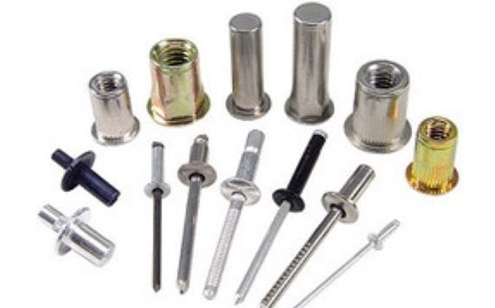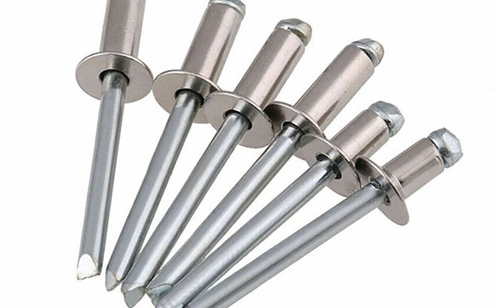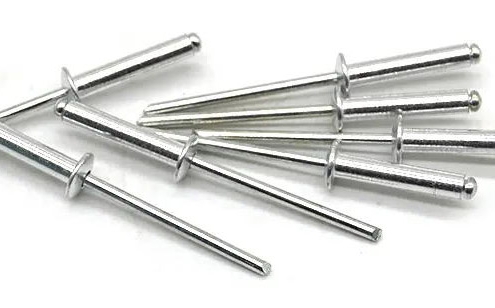What is a Rivet And How Does lt Work?
When it comes to establishing secure and permanent connections between materials, particularly metals, many face challenges in discovering a reliable fastening method that can withstand pressure without compromising strength. Riveting emerges as a standout solution, offering exceptional durability and resistance. In this article, we will delve into the intricacies of rivets, covering their various types, applications, selection criteria, and much more.
A rivet is a mechanical fastener designed to create permanent bonds between materials, commonly utilized in metalworking and industrial applications. It operates by deforming during installation, effectively securing the materials tightly together and providing a level of strength that is often superior to other fastening methods. This makes rivets an ideal choice for applications where durability and reliability are essential.
Read on to discover everything you need to know about rivets, from types to applications and installation methods.
What is a Rivet?
A rivet is a non-threaded metal pin used to create a permanent connection between two or more materials, typically metal or plastic. It features a cylindrical shaft with a factory-formed head at one end. During installation, the opposite end of the rivet is deformed or flattened to form a second head, creating a secure bond that can endure significant forces. This process not only ensures that the materials stay firmly joined but also provides exceptional strength and stability in various applications.
Rivets have been around for centuries, dating back to ancient construction methods, and today they’re essential in industries like construction, aerospace, and automotive manufacturing. From bridges to electronics, rivets play a crucial role in safely and effectively fastening components.
How Does a Rivet Work?
Rivets create robust connections through a deformation process. During installation, the rivet is inserted through aligned holes in the materials, and the tail end is flattened with force to form a second head. This deformation secures the materials tightly together, making rivets an excellent choice for parts that are not designed to be easily disassembled.
The flattened tail assists in evenly distributing pressure across the joined materials, which helps prevent loosening under stress. Whether applied to lightweight materials like aluminum or heavy-duty steel, rivets provide a secure bond characterized by high shear strength, ensuring durability and reliability in various applications.
Types of Rivets
Different types of rivets are used based on material type, application, and desired strength:
- Solid Rivets: The most common, these are used in heavy-duty applications and require access to both sides for installation.
- Blind Rivets (Pop Rivets): Ideal for applications with access to only one side, these rivets expand in place using a mandrel.
- Tubular Rivets: Featuring a partially hollow shaft, these are commonly used in electronics and lighter applications.
- Semi-Tubular Rivets: With a hollow tip, these rivets require less force to install and are used for thin materials.
- Drive Rivets: Installed by driving them into place, they’re often used in semi-permanent applications.
How to Calculate Rivet Size?
Calculating the appropriate rivet size is essential for achieving a strong and reliable bond. Generally, the rivet’s diameter should be three times the thickness of the thickest material being joined. Additionally, the length of the rivet should include the combined thickness of the materials, plus an extra 1.5 times the rivet diameter to account for adequate deformation during installation.
This calculation method helps ensure that the materials are securely fastened without compromising structural integrity, providing a firm grip while preventing over-deformation of the rivet and the joined materials.
Installation Tools and Methods for Rivets
Various tools and techniques are available for installing rivets, depending on the rivet type and application:
- Rivet Guns: These handheld tools are widely used for installing blind rivets and allow for quick, accurate placement.
- Hand Tools: Simple hammers and anvils are used to set solid rivets, typically in traditional metalworking or craft applications.
- Pneumatic Riveters: These tools provide increased power and speed for heavy-duty applications, often used in industrial settings.
How to Choose the Right Rivet?
Choosing the right rivet is critical for ensuring durability, structural integrity, and safety in any project. Here’s the essential factors to consider:
- Material Compatibility: Choosing a rivet made from the same or compatible material as the components it will join is crucial for preventing problems like corrosion and ensuring a strong bond. For example, aluminum rivets are often paired with aluminum components to avoid galvanic corrosion and to establish a secure, uniform connection. This material compatibility becomes even more critical in applications that experience high moisture exposure or extreme temperatures, as using mismatched materials can lead to diminished strength and integrity over time. By ensuring proper material selection, the longevity and effectiveness of the fastening can be significantly enhanced.
- Strength Requirements: Different applications require varying levels of strength and load-bearing capacity. In projects that involve high stress or significant weight loads, such as those found in the automotive or construction industries, steel rivets are often the preferred choice due to their exceptional strength and durability. Conversely, for lighter applications or situations where weight is a critical consideration, such as in aerospace or electronics, aluminum or plastic rivets may be more appropriate. By carefully evaluating the specific load requirements of your project, you can select the most suitable rivet material and type to ensure that it maintains strength and stability under operational stress.
- Environment: The environment in which the riveted structure will be utilized plays a significant role in selecting the appropriate rivet. For outdoor applications or structures that will be exposed to high humidity, saltwater, or harsh chemicals, it is crucial to choose corrosion-resistant rivets, such as those made from stainless steel or those coated with protective finishes. These materials help maintain the rivet’s integrity over time, effectively preventing rust and degradation that could compromise the bond. In contrast, for indoor applications or in less corrosive environments, standard steel or aluminum rivets may be adequate for the task.
What are the Advantages and Disadvantages of Rivets?
Rivets have numerous advantages, but there are also a few limitations to consider.
Advantages:
- High Shear Strength: Rivets provide excellent resistance to shear forces, making them ideal for applications where parts experience lateral stress. This strength helps maintain structural integrity, especially in heavy-duty applications.
- Vibration Resistance: Riveted joints remain stable under vibration, unlike some threaded fasteners that may loosen over time. This makes rivets particularly suitable for use in vehicles, machinery, and aerospace applications.
- Versatility: Rivets are versatile fasteners that can be utilized with a wide range of materials, including metals, plastics, and composites. This flexibility makes them a popular choice in various industries, from construction and automotive to electronics and aerospace.
- Consistent Joint Quality: Rivets are known for providing consistent joint strength and appearance, resulting in a clean, uniform finish on both sides of the workpieces.
Disadvantages:
- Permanent Bond: Rivets create a permanent connection, making it challenging to disassemble components without damaging them. This can be a limitation in applications where future maintenance or adjustments may be required.
- Precise Alignment Required: Rivets necessitate precise alignment during installation to guarantee a strong and secure bond. Any misalignment can compromise the integrity of the joint, leading to a weakened connection. Therefore, careful preparation and attention to detail are essential in the riveting process to ensure that materials are properly aligned, maximizing the effectiveness of the rivet and ensuring the durability of the joint.
- Hole Drilling Required: Riveting requires pre-drilled holes in each workpiece, which can introduce additional steps and time to the assembly process compared to other fasteners, such as screws. This extra preparation is necessary to ensure precise alignment and proper installation of the rivets. Although this may increase the initial assembly time, the resulting strong and permanent connections provided by rivets can often justify the added effort, especially in applications where durability and reliability are critical.
Main Applications of Rivets
Rivets have a vast range of applications across industries, thanks to their versatility and strength. Here’s where you’ll often find rivets in use:
- Automotive: Rivets are commonly used to assemble car body parts and secure components.
- Aerospace: Rivets withstand high stresses, making them essential in constructing airplane fuselages and wings.
- Clothing (e.g., jeans): Small rivets are used in jeans to reinforce stress points, especially around pockets.
- Construction: Used to secure steel beams and join heavy metal parts in infrastructure projects.
In Conclusion
Rivets offer a robust and permanent fastening solution for joining materials, making them essential across various industries. Familiarity with the different types of rivets, their applications, and proper installation techniques is crucial for achieving optimal performance in any project. By understanding these factors, you can select the appropriate rivet for your specific needs, ensuring strong, lasting connections that meet the demands of the application.
Frequently Asked Questions About Rivet
Why Use Rivets Instead of Welding?
Rivets are used instead of welding when joining materials that can’t withstand high temperatures, such as certain plastics or thin metals. They provide a strong, durable bond while avoiding the complexities and heat-related risks of welding. Rivets also offer flexibility in design and are easier to install in various positions.
What is the Importance of Riveted?
Riveting is important because it creates a permanent, secure, and reliable bond between materials. It is commonly used in construction, aerospace, and automotive industries for its strength and ability to resist shear forces. Rivets are also easy to inspect, making them ideal for applications where safety and long-term durability are critical.
What is a Rivet On Jeans?
A rivet on jeans is a small metal fastener placed at stress points, like pocket corners, to reinforce the fabric and prevent tearing. The rivet strengthens the seams, making the jeans more durable and increasing their lifespan. This feature was popularized by Levi Strauss in the 19th century and is now a classic design element.






